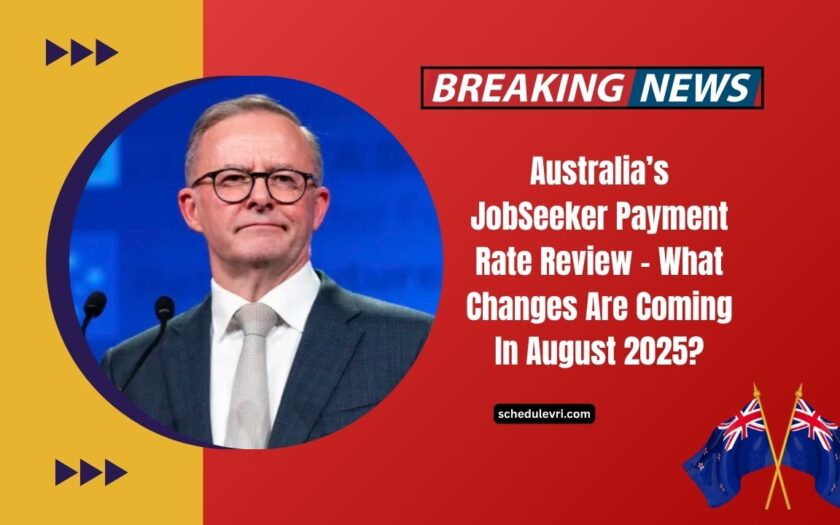As Australia navigates economic challenges in 2025, the government is set to implement a new JobSeeker payment adjustment in August.
This biannual review offers some changes to welfare support, with both advocates and recipients eager to see how these increases will address the mounting cost of living pressures.
The JobSeeker payment is essential for Australians who are unemployed and actively seeking work. The government’s decision to adjust these rates is crucial in keeping the welfare system aligned with the rising cost of living.
However, as inflation continues to outpace wage growth, the real-world impact of these changes is subject to scrutiny. Here’s a comprehensive look at what’s changing and how these adjustments compare to previous ones.
Breakdown of the New JobSeeker Increase 2025
From August 2025, the Australian government will implement a modest increase to the JobSeeker payment. Below is a breakdown of the new rates compared to the current figures:
| Category | Current Rate (as of March 2025) | New Rate (from August 2025) |
|---|---|---|
| Single, no children | $762.20 per fortnight | $779.30 per fortnight |
| Single, with dependent child | $816.90 per fortnight | $834.50 per fortnight |
| Couple, each | $698.10 per fortnight | $713.40 per fortnight |
While these increases bring a slight adjustment to the welfare budget, they still fall short of the $76-a-day target that many advocacy groups, such as ACOSS (Australian Council of Social Service), have called for.
These increases are tied to the Consumer Price Index (CPI), which reflects changes in inflation, but the pace of these adjustments has not kept up with the reality of rising living costs, particularly in major cities.
Why the JobSeeker Payment Needs More Than Just Indexation
The increase in JobSeeker payments may provide some relief, but it is not sufficient to address the financial strain that many Australians are experiencing.
The cost of living has surged, particularly in housing, food, and transportation. Despite the CPI increases, these adjustments do not fully account for the steep price increases in these areas.
While the government’s indexation policy is an important mechanism for adjusting payments, it fails to keep pace with real-world expenses.
Advocacy groups like ACOSS argue that more substantial, systemic changes are needed to make JobSeeker payments sustainable in the long term. The issue of affordability, particularly for those relying on welfare over extended periods, remains a pressing concern.
Centrelink Updates: Automation, Eligibility, and Service Delivery
Apart from the changes to JobSeeker rates, the Australian government is rolling out several updates to Centrelink’s service delivery.
With a greater emphasis on automation, these improvements aim to streamline the claims process, reducing wait times and enhancing fraud detection.
However, these digital upgrades come with concerns. Some welfare recipients, especially in regional areas, have raised concerns about the reduced availability of in-person services.
The digital shift may benefit those who are comfortable navigating online platforms but could leave others, particularly older Australians or those without reliable internet access, at a disadvantage.
Eligibility rules for JobSeeker will remain largely unchanged in August 2025. However, there are ongoing reviews of mutual obligation requirements and how these are implemented.
Pilot programs are testing new ways of reporting job-seeking activity, which may result in a more streamlined process moving forward.
Comparing Australia’s Welfare Model with Other Countries
Australia’s approach to unemployment support is often compared with those of other developed nations. New Zealand, for example, offers additional housing supplements and broader family support, while Canada has stronger income replacement rates for the unemployed.
Australia’s welfare system, designed primarily as a transitional safety net, has been under increased scrutiny, particularly as more Australians rely on JobSeeker for long-term support.
The aging population, particularly those over 55, and the rising number of individuals in rural areas who remain dependent on welfare for extended periods highlight the growing challenge for Australia’s social safety net.
While the government has made moves to address these issues, the current changes in JobSeeker payments may not be enough to bridge the gap.
In August 2025, the increase in JobSeeker payments offers some financial relief for unemployed Australians but falls short of addressing the full scope of rising living costs.
While there are improvements in Centrelink’s service delivery, more substantial reforms may be needed to support those relying on welfare long-term.
The adjustments, though modest, provide some hope, but the debate continues over whether they are enough to truly meet the needs of struggling Australians.
FAQs
When will the JobSeeker payments increase take effect?
The new rates will take effect from August 2025.
How much will JobSeeker payments increase by?
The increase ranges from $17.10 to $16.60 per fortnight, depending on the category.
Will Centrelink services change with the new updates?
Yes, Centrelink is introducing automation to improve processing times, though in-person services may be reduced in some areas.
